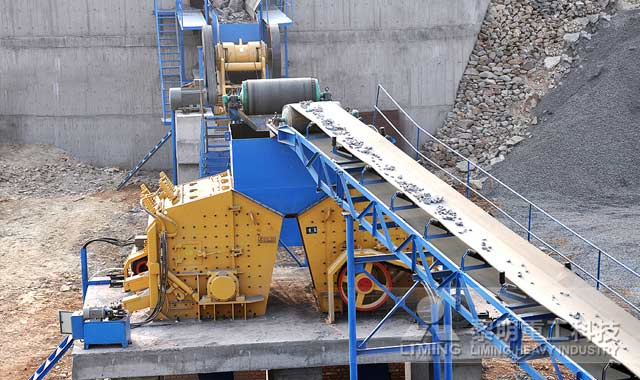Designing a limestone crushing plant involves careful planning and selection of equipment to ensure efficient and effective processing of limestone. Here’s a comprehensive overview of a typical limestone crushing plant configuration:
1. Feed Hopper
The process starts with a feed hopper where the raw limestone is delivered. This hopper typically includes a vibrating feeder or a grizzly screen to separate large rocks and remove any oversized material before it enters the crushing system. The size and capacity of the hopper depend on the anticipated volume of limestone to be processed and the specific requirements of the plant.

2. Primary Crushing
The primary crusher is a crucial component of the limestone crushing plant. Jaw crushers and gyratory crushers are commonly used for this purpose. Jaw crushers are ideal for their ability to handle large feed sizes and produce a uniform product size. Gyratory crushers are also effective for primary crushing, especially in large-scale operations. The choice between these crushers depends on the scale of production and the desired output size.
3. Secondary and Tertiary Crushing
After the primary crushing, the limestone typically undergoes secondary and sometimes tertiary crushing to achieve the desired particle size. Cone crushers and impact crushers are commonly used in these stages. Cone crushers are suitable for producing finer material and are often used in secondary and tertiary stages. Impact crushers, on the other hand, are effective for producing cubical-shaped products and are often used for more fine crushing.
4. Screening
Screening is an essential step to separate the crushed limestone into different sizes. Vibrating screens are used to classify the material into various size fractions. This ensures that the final product meets the required specifications and reduces the need for further processing. The screen sizes and configurations depend on the specific requirements of the end product and the capacity of the plant.
5. Conveying Systems
Efficient material handling is crucial for any crushing plant. Conveyor belts are used to transport the crushed limestone from one stage of the process to the next. These conveyors can be horizontal or inclined, depending on the plant layout and the elevation changes within the plant. Proper maintenance and alignment of conveyor systems are essential to prevent downtime and ensure smooth operation.
6. Storage and Stacking
After crushing and screening, the limestone is usually stored in stockpiles or bins. Stackers and reclaimers are used to manage the stockpiles and ensure a steady supply of material for further processing or shipment. Proper storage helps in managing inventory and optimizing the use of the crushed limestone.
A well-configured limestone crushing plant ensures efficient processing and high-quality output. The key components include the feed hopper, primary crusher, secondary and tertiary crushers, screening systems, conveying systems, and storage. Each element plays a vital role in achieving the desired product size and meeting production goals while adhering to environmental and safety standards.

